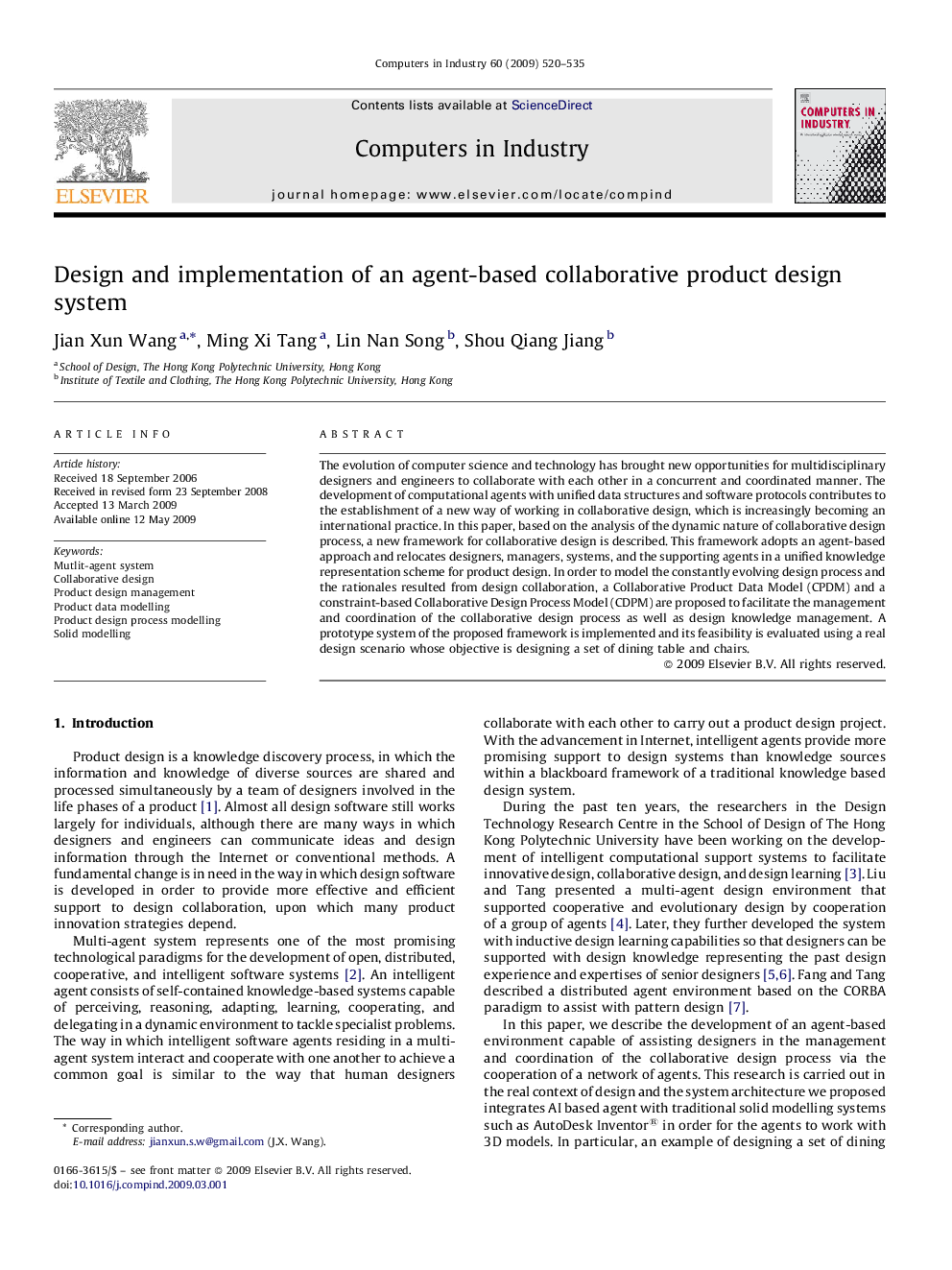| Article ID | Journal | Published Year | Pages | File Type |
|---|---|---|---|---|
| 508701 | Computers in Industry | 2009 | 16 Pages |
The evolution of computer science and technology has brought new opportunities for multidisciplinary designers and engineers to collaborate with each other in a concurrent and coordinated manner. The development of computational agents with unified data structures and software protocols contributes to the establishment of a new way of working in collaborative design, which is increasingly becoming an international practice. In this paper, based on the analysis of the dynamic nature of collaborative design process, a new framework for collaborative design is described. This framework adopts an agent-based approach and relocates designers, managers, systems, and the supporting agents in a unified knowledge representation scheme for product design. In order to model the constantly evolving design process and the rationales resulted from design collaboration, a Collaborative Product Data Model (CPDM) and a constraint-based Collaborative Design Process Model (CDPM) are proposed to facilitate the management and coordination of the collaborative design process as well as design knowledge management. A prototype system of the proposed framework is implemented and its feasibility is evaluated using a real design scenario whose objective is designing a set of dining table and chairs.
